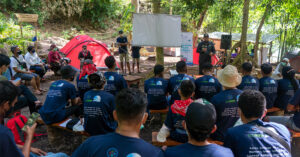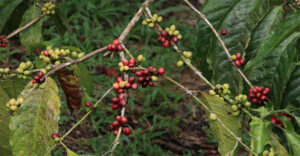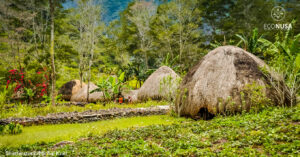
Public enthusiasm with Ambaidiru coffee has yet gone alone with sufficient production to meet the need of industrial demand. Most traditional coffee farmers sell their small scale and limited crops to simply surrounding Yapen Regency. They could sell quite a lot only when there is a certain event such as Papua Coffee Festival.
Besides, there is no standard yet for after-crop processing among local farmers. The standard should have been applied from cherry picking, peeling, air circulation, drying temperature, up to roasting process. As a result, coffee flavor and quality has decreased due to the absence of standard.
Coffee practitioner Ganjar Satyanagara said there is not standard for picking the mature cherry for harvesting process. For instance, the red and reddish yellow fruit is deemed mature and ready to harvest. In the drying process, air circulation in the drying houses does not run appropriately. This brings about humidity that leads to the higher water level in a coffee bean.
“Water level of a coffee bean should have ranged at 11-12 percent. But the poor air circulation will make the water level stay at around 18-20 percent with a quite longer period,” said Ganjar.
Another challenge comes from the roasting process. Green bean roasting process is still manually done using kerosene or firewood. As a result, without any standardized flame and time, the green bean might be roasted quite longer. Thus, the coffee bean will be burned, and it produces higher carbon substance. Coffee will taste more bitter.
“If we have standard from picking the red cherry up to time and temperature standard during roasting process, it will produce complex flavor. We are sure if Ambaidiru applies a standardized process, so Ambaidiru coffee will have distinctive flavor which does not belong to anywhere,” said Ganjar. As to him, to compete in coffee industry, Ambaidiru coffee has already had brand or distinctive type.
Ganjar said that coffee planted since the Dutch colonial era is still productive at Kakupi and Paputum. Coffee tree commonly can survive for only 25 years long. But, the form of coffee plant at both locations here are very unique. Cutting coffee trunk would make the trunk grow swirling around such as a bonsai at 1.5-meter height.
“They also use organic fertilizer. This is very good for an image branding prior to marketing and brand activation. In the near future, Ambaidiru also has agro-tourism potentials,” said Ganjar optimistically.
EcoNusa’s Natural Resources Management Staff Vanji Dwi Prasetyo said that Ambaidiru coffee industry need further intervention from the local government. As to Vanji, Ambaidiru coffee, in addition to the source of local livelihood, has also played a role as the buffer zone for Central Yapen Nature Preserve.
“Stakeholders in Ambaidiru should maintain consistently the coffee quality for the best coffee product and to meet the need of market demand,” said Vanji.
Editor: Leo Wahyudi







